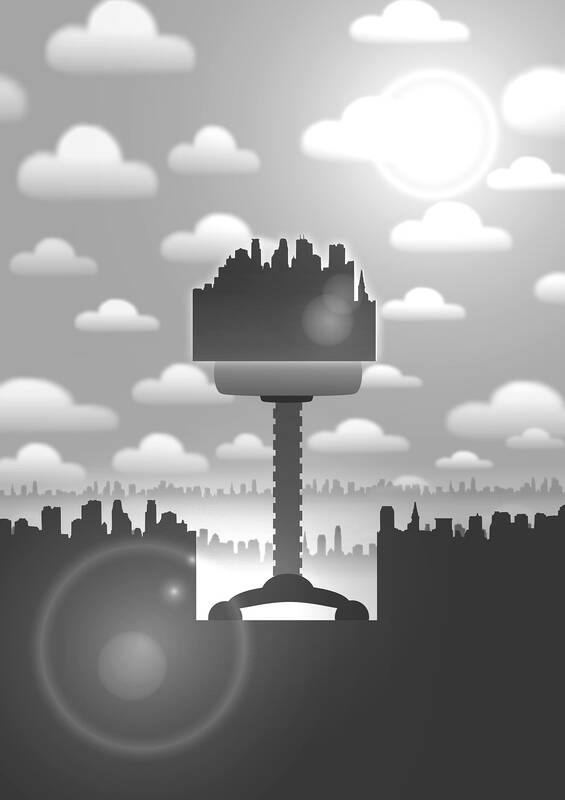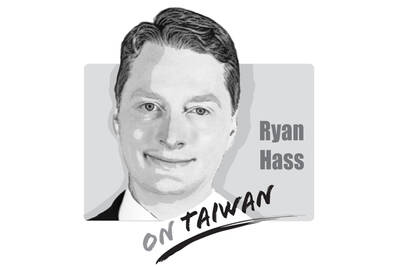It is fair to say that Tokyo has some of the world’s hippest neighborhoods, but I was not the only one to raise an eyebrow when Time Out magazine declared Jimbocho to be not just the coolest in the Japanese capital, but in the entire world.
Jimbocho? Really? The place with the bookstores and ski shops?
Look, as areas go, it is perfectly lovely. Nestled in between the northeast side of the Imperial Palace and the Kanda River, it boasts more than 100 bookshops and perhaps the capital’s best curry. It has a pleasing mix of modern and classic, exemplified by the mash-up of artisanal cafes and traditional kissa coffee shops. The student-heavy crowd means it has a youthful skew, while Yasukuni Shrine, the Nippon Budokan arena and the Tokyo Dome are all within walking distance.

Illustration: Yusha
However, other parts of the capital have all that and more. Fundamentally, what even is a “coolest” neighborhood? Who gets to arbitrate these things?
Tokyo has been featuring in these lists for years, but it was not until the late 1990s or early 2000s that global images began to shift from Blade Runner-style neon skyscrapers to the city’s walkable districts. Japan was, for most, still unknown back then — and like all things that are trendy, the foremost requirement is that I, the writer, know the subject more intimately than anyone else.
That seems to have set off a game of brinkmanship as hip areas are discovered by the masses, forcing trendsetters to move to ever more obscure ones. Coverage once focused on the likes of Shimokitazawa, Koenji or Kichijoji, offbeat hipster districts with indie music venues and plenty of flavor. Over time, coverage moved to the likes of the upscale-yet-still-cool Daikanyama (for reasons that baffle me sometimes known in tourist literature as “Little Brooklyn”) or nearby Nakameguro — although by 2019, when Harry Styles of One Direction was living there and reading Haruki Murakami (so passe!), you knew things had moved on.
More recently, attention has shifted to the likes of Tomigaya, a leafy suburb near Shibuya, or the lively Sangenjaya. These days, local magazines often rave about areas east of Tokyo, such as Kuramae or the coffee oasis of Kiyosumi-Shirakawa.
I do not know what deems these places cool, but I know it when I see it. It seems to involve some combination of lively, but not busy, near a major transportation hub, but not part of one. They need to be walkable and local, but not overly residential, with rents low enough to attract artisanal coffee shops, vintage clothing stores and record shops.
Not being a coffee snob, fashionista or audiophile, I have never quite understood this, although I will accept that they seem to draw in a certain kind of clientele — the artists, DJs and part-time models of the likes seen in the karaoke scene of Lost in Translation. There cannot be too many people who are rich enough to afford fancy cars, but there definitely cannot be many genuinely working-class people. Once foreign tourists arrive with their backpacks and cargo shorts, we have to decamp and find a new one.
We know the areas that are not. Hiroo or Azabu are desirable places to live, but too full of wealthy expats. Somewhere like Kita-Senju is too authentic, too day-to-day Japanese. Roppongi was perhaps once trendy, but only with a certain type of banker or clubber. The artificial islands of Odaiba and Toyosu would not be in vogue for decades, if ever. Ueno is too lowbrow; Nishi-Shinjuku too sterile. Others are trendsetting, but not cool — think the 2000s image of Harajuku as a global fashion center (these days much too commercial).
As a long-suffering Shibuya resident, if these lists help disperse tourists to some underappreciated areas, then so much the better. However, Tokyo cannot be reduced to a single trendy suburb: What is appealing is precisely the incongruity of its locales.
What I like about a place like Shibuya is how you can cross a street and go from a grungy back alley of clubs and suspicious head shops to a leafy upscale residential enclave of chief executives and politicians. The main thoroughfares might be packed with tourists, but they rarely find the tucked-away lanes or Japan’s greatest secret — the tiny bars and local spots stacked vertically in the upper reaches of midsize mixed-use buildings.
Most importantly, you can walk in one direction and be in leafy Tomigaya or Yoyogi Koen in minutes. Head in another, and you will encounter the hidden boutiques of Daikanyama, the upscale shopping of Aoyama and Omotesando, the trendy bars of Ebisu or the up-and-coming Ikejiri-Ohashi. These are the differences that make Tokyo special — and the ease of travel means you can decamp to another area if one becomes overrun.
So give up trying to find the single coolest Tokyo neighborhood, because there is not one. Frankly, even if there was, I would keep it to myself.
Gearoid Reidy is a Bloomberg Opinion columnist covering Japan and the Koreas. He previously led the breaking news team in North Asia, and was the Tokyo deputy bureau chief. This column reflects the personal views of the author and does not necessarily reflect the opinion of the editorial board or Bloomberg LP and its owners.

There has been much catastrophizing in Taiwan recently about America becoming more unreliable as a bulwark against Chinese pressure. Some of this has been sparked by debates in Washington about whether the United States should defend Taiwan in event of conflict. There also were understandable anxieties about whether President Trump would sacrifice Taiwan’s interests for a trade deal when he sat down with President Xi (習近平) in late October. On top of that, Taiwan’s opposition political leaders have sought to score political points by attacking the Lai (賴清德) administration for mishandling relations with the United States. Part of this budding anxiety
The diplomatic dispute between China and Japan over Japanese Prime Minister Sanae Takaichi’s comments in the Japanese Diet continues to escalate. In a letter to UN Secretary-General Antonio Guterres, China’s UN Ambassador Fu Cong (傅聰) wrote that, “if Japan dares to attempt an armed intervention in the cross-Strait situation, it would be an act of aggression.” There was no indication that Fu was aware of the irony implicit in the complaint. Until this point, Beijing had limited its remonstrations to diplomatic summonses and weaponization of economic levers, such as banning Japanese seafood imports, discouraging Chinese from traveling to Japan or issuing
On Nov. 8, newly elected Chinese Nationalist Party (KMT) Chairwoman Cheng Li-wun (鄭麗文) and Vice Chairman Chi Lin-len (季麟連) attended a memorial for White Terror era victims, during which convicted Chinese Communist Party (CCP) spies such as Wu Shi (吳石) were also honored. Cheng’s participation in the ceremony, which she said was part of her efforts to promote cross-strait reconciliation, has trapped herself and her party into the KMT’s dark past, and risks putting the party back on its old disastrous road. Wu, a lieutenant general who was the Ministry of National Defense’s deputy chief of the general staff, was recruited
Tokyo-Beijing relations have been rapidly deteriorating over the past two weeks as China tries to punish Japan over Japanese Prime Minister Sanae Takaichi’s remarks about Taiwan earlier this month, and the off-ramp to this conflict is yet to be seen. Takaichi saying that a “Taiwan contingency” could cause a “situation threatening Japan’s survival” — which would allow Japan to act in self-defense — has drawn Beijing’s ire and sparked retaliatory measures. Her remark did not gain public attention until Chinese Consul General in Osaka Xue Jian (薛劍) made an apparent threat to behead her. The two sides lodged protests against each